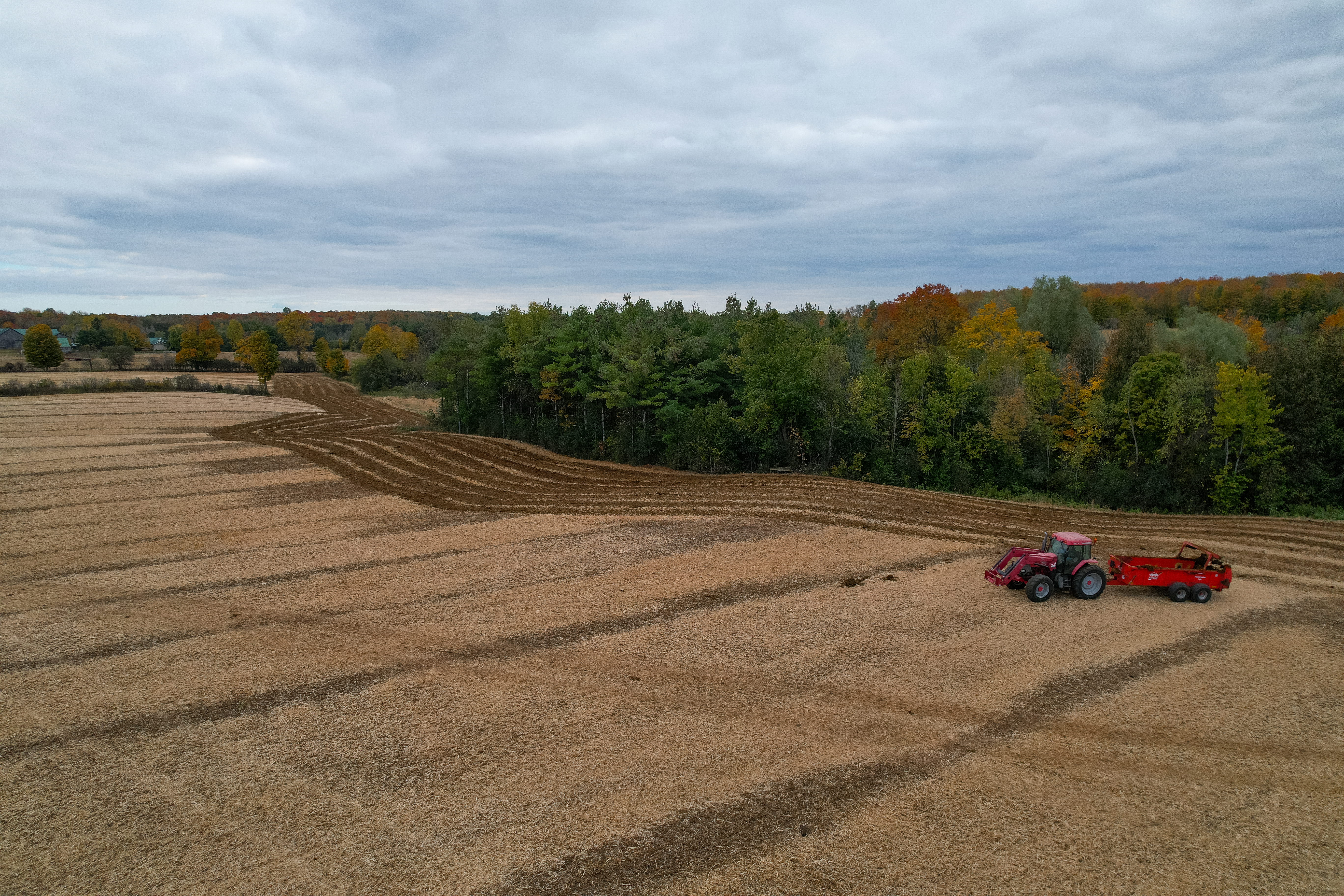Making soil — and storing carbon — in the Greenbelt
Making soil — and storing carbon — in the Greenbelt Canada's National Observer



Aiming for Sustainable Agriculture: Bolstering Soil Health in Ontario’s Greenbelt
A group of researchers and conservationists is undertaking a two-year project to enhance the soil health of hundreds of farms in Ontario’s Greenbelt, with the aim of mitigating climate change. The Greenbelt is a protected area near Toronto that consists of farmland and conservation areas. As part of this initiative, farmers in the Greenbelt are provided with free soil testing and guidance on improving soil health. Healthy soils play a crucial role in preventing erosion, reducing nutrient runoff, and acting as a carbon sink to mitigate greenhouse gas emissions. By implementing specific farming practices such as cover crops and eliminating tillage, farmers can build climate resilience in a sustainable agricultural sector.
The significance of healthy soils in combating climate change has gained considerable attention in Canada and globally. Regenerative farming practices focused on improving soil health for climate benefits have garnered interest from farmers, policymakers, and the media. The Canadian federal government is also promoting soil-focused practices through various policies, including the 2021 fertilizer emissions reduction policy, which aims to encourage farmers to adopt soil health-promoting practices. Excessive use of nitrogen fertilizers not only leads to nitrous oxide emissions, a potent greenhouse gas, but also depletes soils’ organic matter and microbial activity.
Recommendations for Promoting Soil Health
A provincial legislative committee in British Columbia recently recommended that the government implement a range of policies to support farmers in promoting soil health. These recommendations include the establishment of programs similar to the Greenbelt Foundation’s soil-testing initiative, which helps farmers identify the best strategies for enhancing soil health. In Ontario’s Greenbelt, climate change is expected to extend the growing season, but it will also bring increased precipitation and the emergence of new pests, which can outweigh the benefits of a longer season for farmers. Healthy soils can enhance farmers’ resilience to these impacts by improving water absorption and fostering diverse microbial communities that combat plant infections and pests.
According to Megan Sipos, a research and policy analyst with the Greenbelt Foundation, improving soil health through changes in management practices can make farms more resilient, profitable, and environmentally friendly. By reducing emissions and sequestering carbon, soil health contributes to supporting farms in the face of climate change and maintaining Ontario’s rich agrifood system.
Challenges for Farmers
Barb Parker, a farmer from Halton County in southern Ontario’s Greenbelt, has experienced the benefits of prioritizing soil health on her mixed grain and livestock farm. Unlike many neighboring farms, Parker’s family has refrained from tilling their fields for years and has adopted practices to enhance soil health. The comprehensive soil tests conducted by the Greenbelt Foundation confirmed the vibrancy and organic matter content of their fields. However, Parker acknowledges that many farmers in the region face obstacles in implementing similar measures, particularly those who rent their farmland. Renting land often limits farmers’ ability to invest in long-term soil health improvement, as they may not have the assurance of staying on the same plot for an extended period. Financial pressures also lead some farmers to rely on soil-harming fertilizers and pesticides to grow cash crops like soy or corn, which offer more financial security.
Farmland consolidation is a nationwide issue, with investors increasingly purchasing Canadian farmland and renting it out to tenant farmers. This trend often subjects farmers to landlord influence over production practices, including the use of less sustainable methods to maximize yields. The parliamentary committee in British Columbia highlighted the need to increase farmers’ and ranchers’ access to agricultural land to facilitate the adoption of long-term practices that sequester carbon in the soil.
Parker expressed gratitude for the soil health insights provided by the Greenbelt Foundation, emphasizing the importance of validation and knowledge-sharing among peers.
SDGs, Targets, and Indicators
| SDGs | Targets | Indicators |
|---|---|---|
| SDG 2: Zero Hunger | 2.4: By 2030, ensure sustainable food production systems and implement resilient agricultural practices that increase productivity and production, that help maintain ecosystems, that strengthen capacity for adaptation to climate change, extreme weather, drought, flooding and other disasters and that progressively improve land and soil quality. | Indicator not mentioned in the article. |
| SDG 13: Climate Action | 13.1: Strengthen resilience and adaptive capacity to climate-related hazards and natural disasters in all countries. | Indicator not mentioned in the article. |
| SDG 15: Life on Land | 15.3: By 2030, combat desertification, restore degraded land and soil, including land affected by desertification, drought and floods, and strive to achieve a land degradation-neutral world. | Indicator not mentioned in the article. |
1. Which SDGs are addressed or connected to the issues highlighted in the article?
The issues highlighted in the article are connected to SDG 2: Zero Hunger, SDG 13: Climate Action, and SDG 15: Life on Land.
2. What specific targets under those SDGs can be identified based on the article’s content?
Based on the article’s content, the specific targets that can be identified are:
- Target 2.4: By 2030, ensure sustainable food production systems and implement resilient agricultural practices that increase productivity and production, that help maintain ecosystems, that strengthen capacity for adaptation to climate change, extreme weather, drought, flooding and other disasters and that progressively improve land and soil quality.
- Target 13.1: Strengthen resilience and adaptive capacity to climate-related hazards and natural disasters in all countries.
- Target 15.3: By 2030, combat desertification, restore degraded land and soil, including land affected by desertification, drought and floods, and strive to achieve a land degradation-neutral world.
3. Are there any indicators mentioned or implied in the article that can be used to measure progress towards the identified targets?
No indicators are mentioned or implied in the article that can be used to measure progress towards the identified targets.
Behold! This splendid article springs forth from the wellspring of knowledge, shaped by a wondrous proprietary AI technology that delved into a vast ocean of data, illuminating the path towards the Sustainable Development Goals. Remember that all rights are reserved by SDG Investors LLC, empowering us to champion progress together.
Source: nationalobserver.com

Join us, as fellow seekers of change, on a transformative journey at https://sdgtalks.ai/welcome, where you can become a member and actively contribute to shaping a brighter future.







